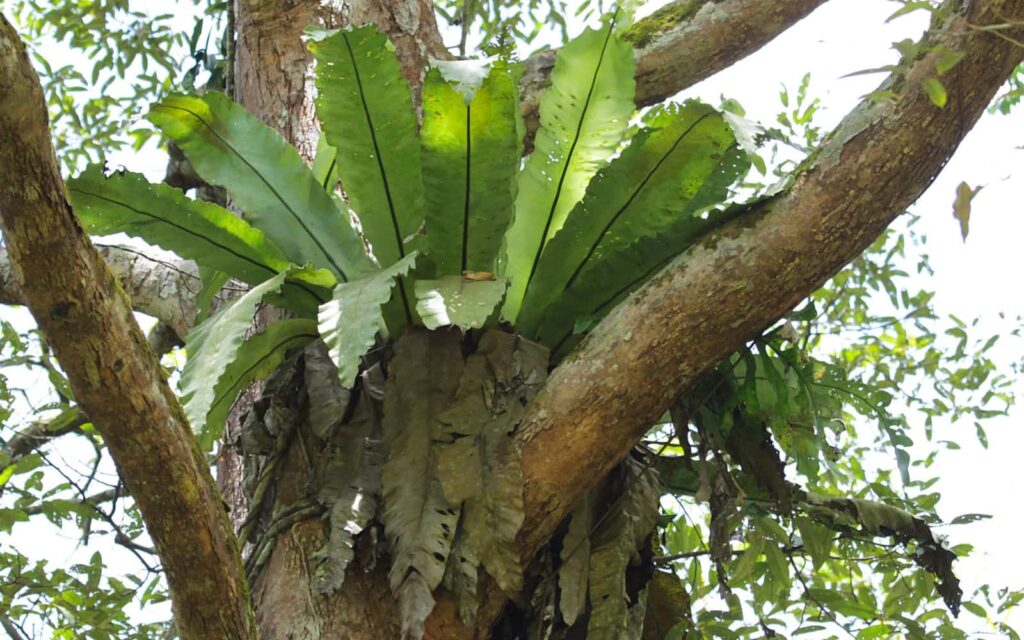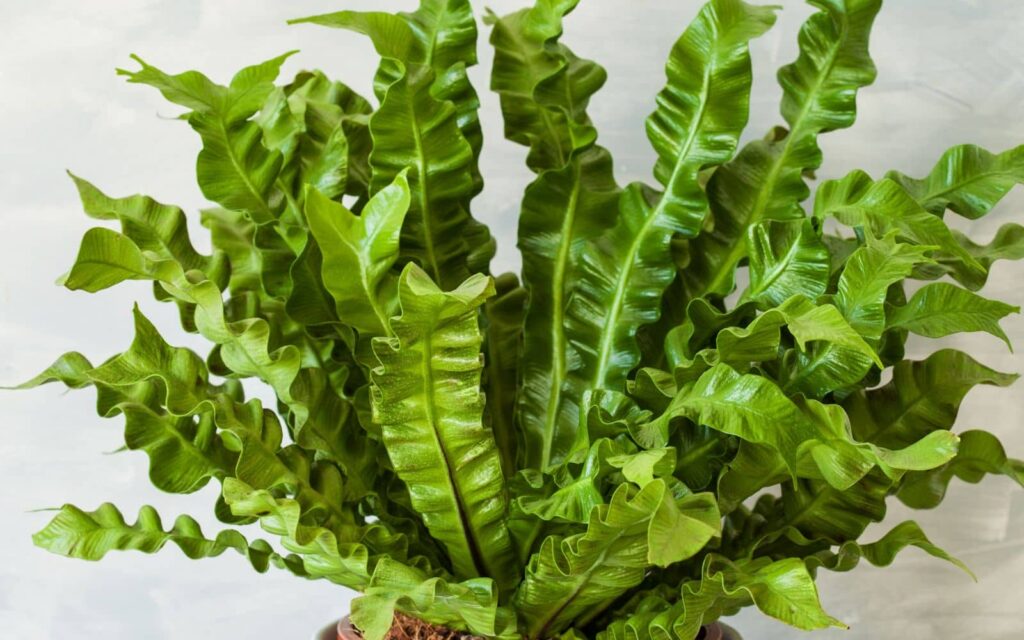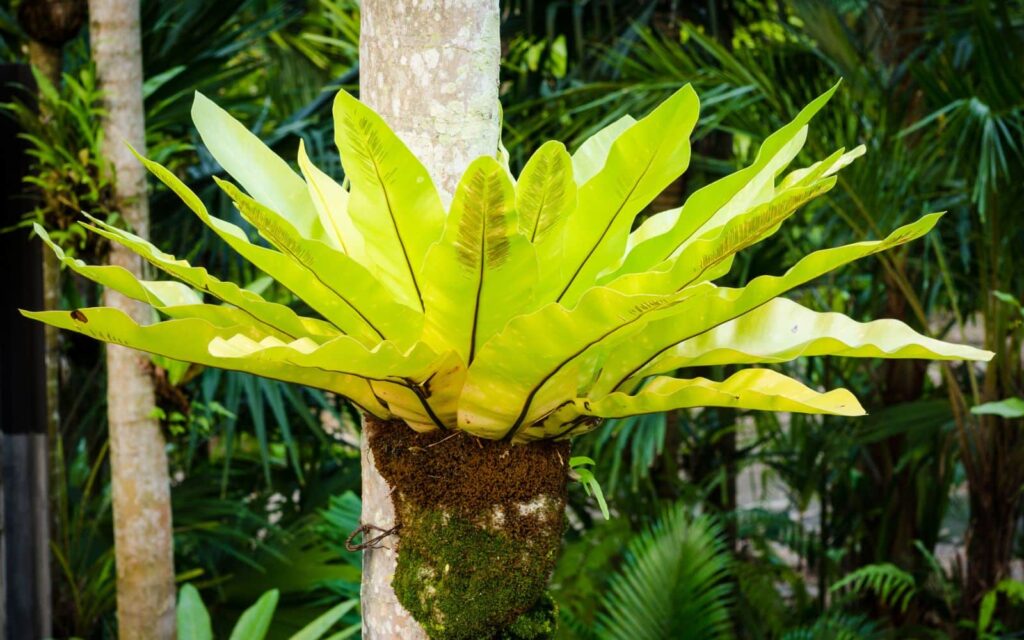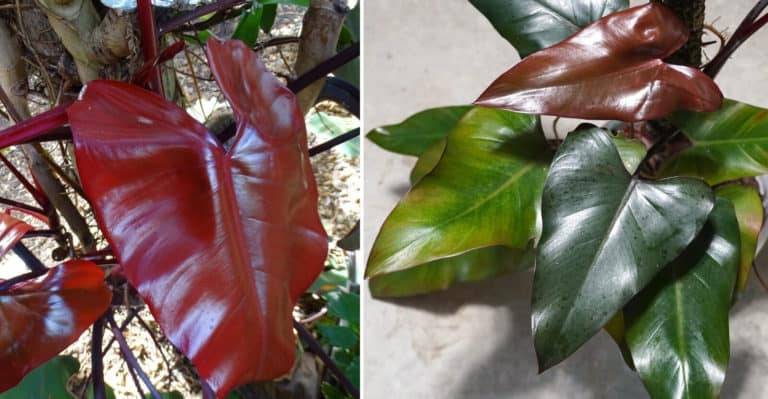Amazon has put together some great Home Gift Deals – save money and get your shopping done at the comfort of your home! Click here to see deals on Amazon
Most gardeners know that ferns are one of the most versatile plants in their arsenal. You can use them in rock gardens, in shade or sun, and even as houseplants.
However, many house plant ferns are out there, so it can be hard to figure out which is the best one for your garden. One of the best choices for people who want a hardy fern for their garden is the Crispy wave fern (Japanese Asplenium nidus).
These ferns are low maintenance, tolerant of various growing conditions, and look great in a wide range of landscapes. Although it’s not difficult to grow, it’s a little picky about the conditions it needs to stay healthy.
That’s why it’s a little tricky to grow it at home. But I’ve experimented with different methods to see what works, and I’ve learned a few tricks to get you to grow a healthy plant.
What is a crispy wave fern?
This is a cultivar of the widespread low maintenance plant species Asplenium Nidus. The plant has bright green ferns with ruffled leaves that give it the “Crispy Wave” name. Some people also refer to it as the “Bird’s Nest Fern” due to its outward radiating leaves with a leafy basin at the center.
More than 700 different plants are belonging to the same species as the Crispy wave. It was initially found in Japan and Taiwan’s tropical forests but later spread to Africa, Asia, Australia, and Europe.
This may sound too good to be true, but this plant can remove carbon dioxide like harmful substances from indoor air and release fresh oxygen into your home.
It also has medicinal properties. In earlier times, people crushed it and made it into a drink to heal people with spleen disorder.
How big does a crispy wave fern get?
Crispy fern is a non-flowering popular hanging plant. This plant can grow to be 2 feet (61 cm) tall. This makes it great indoor voracious growers’ plant because it will add a lot of greenery to your home while also purifying the air inside.
It’s easy to care for in small pots or hanging baskets. The shiny, green, and upright leaves sprout, making it an excellent living accent in the living room, bedroom, and kitchen.
Although it’s a beautiful plant grown indoors, it can grow to be much larger if grown outdoors. So, if you want it to grow large and lush, make sure to provide it with consistent temperature and high humidity.
Plant growing summary:
| Factor | Growth Condition |
|---|---|
| Soil | Moist but well-drained tropical soil mixture |
| Water | Water it twice a week |
| Sunlight | 3 to 6 hours of indirect light |
| Temperature | 70 and 90 °F (21–32 °C) |
| Fertilizer | Once a month with half-strength liquid fertilizer |
| Propagation | Seed and Root division |
| Humidity | High humidity (60–90%) |

How to propagate crispy wave fern?
There are several different ways to propagate this. The most common being growing it from spores, propagating it by division, or using leaf base bulbils.
Growing ferns from spores can take a long time, but it’s the best propagation method and should result in plenty of new plants.
Propagating through spores
Step 1: You should collect spores from the existing plant in midsummer. To select ripe spores, examine the underside of the frond. If you see glossy, dark brown, or black sporangia, it means they’re ripe. Make sure you choose to ripen spores for propagation.
Step 2: Using a cutting scissor, trim the frond section with ripe spores and put it in a plastic bag to leave it there for 48 hours.
Tap the bag vigorously, and very fine dust should appear at the bottom of the bag. Inspect it closely to know if you have spores or plant particles.
Step 3: Remove identical size spores from plant particles. If you’re not ready to plant it right away, you can store it in a dry place. But the germination is much better if they’re sown sooner than later.
Step 4: Prepare a potting mix to fill in the container. Ericaceous compost with low nutrient content of peat gives good results. You can sterilize the compost by pouring boiling water over it. This helps kill any bacterial, fungi, mosses, or live worts in the compost that can damage the spores.
Step 5: Sprinkle spores lightly on the soil surface and store the growing pot in good indirect sunlight. You don’t need to water it.
Step 6: In a month to two months, you will see a thin film of green layer over the soil. It may produce the first fronds before winter, but they will more likely appear the following spring.
Step 7: Once enough fronds have been produced, remove the pot from the plastic bag, place them in indirect light, and lightly water it. Gradually expose the young ferns to the open air and transplant them into a bigger pot when it becomes ready.
Propagation through division
Once the fern’s rhizome has produced at least two growing tips, the parts can be separated with pruning shear and planted out separately. You should split a good-sized colony for the best result.
Step 1: Select the line where the division is to be made. Divide the plant by slicing apart sections of the crown. Divide each clump into two, three, four, or more pieces.
Step 2: Select the divisions and untangle the roots below and the shoots above. The more root and shoots each division have, the better its chances of survival and the sooner it will reach maturity again.
Step 3: Plant your new fern in the prepared garden ground. Treat it like a new plant by keeping it watered and mulched until it’s fully established.

How do you take care of a crispy wave fern?
When it comes to caring for these feathery fronds that look like tropical bird’s wings, there are a few things you should know, particularly if you want to keep your plants alive for years to come.
Let’s find out how you can take care of it properly.
What kind of soil do Asplenium ferns like?
Crispy wave ferns (Asplenium species) are epiphytic in the wild, which means they grow on the surface of other plants feeding on forest detritus or decomposing leaves.
This means they’re susceptible to the soil pH and nutrients that they can get. It prefers slightly acidic soil, which means they grow well in a mixture of organic potting mix, coarse sand, or perlite.
Soil drainage is usually a more important factor than pH and can influence the growth rate.
When preparing the potting mix, use sandy soil for better drainage. You can increase the soil’s moisture-retaining properties by adding fiber in the form of peat, coir, leaf mold, or well-rotted garden compost.
You can add the same organic materials in heavy soil. The above ingredients open up the soil structure and prevent waterlogging. Adding well-rotted compost improves the soil structure to help fern grow and makes it easy for crispy wave plant care.
How much should you water crispy wave fern?
The fern prefers moist soil to grow correctly. The soil should be moist but not overly damp. Too much watering may cause the fern root to rot. And most often, people plant it indoors, usually over water than underwater.
To avoid stress or overwater, you should always water the plant from above and make sure there is good drainage at the pot’s bottom. The soil should be kept lightly moist, but never let it dry out or go without water.
Depending on the climate you’re growing, you may water it twice a week. Choose water that is neither too hot nor too cold as it causes shock to the plant. If you’re using tap water, let it settle for a couple of hours to filter any impurities or minerals.
When watering it, simply water the outside of the rosette. Doing so will prevent stagnant water from forming and will also keep bugs away. It’s also preferred to water it in the morning.
When you water your plant in the morning, it has plenty of time to absorb the water, and any excess can evaporate before the heat of the day. When you water your fern plant in the evening, this process takes longer, making the plant susceptible to disease.
Should you mist crispy wave fern?
It’s important to mist your plants if you’re experiencing dryness inside your home, as this will keep the fern hydrated and moist without getting them too wet.
Using a spray bottle and misting the plant twice a day give them sufficient surface moisture. The fern grows best when the humidity level is between 60 to 90 percent.
It’s essential to keep in mind that extra watering won’t solve the humidity problem. You should also factor in your home’s heating and cooling system when deciding the misting and watering interval.
If you live in an area with high humidity during the summer, then misting won’t be necessary. But if you live in a cold climate where you need to turn to heat on, you may need more frequent misting to increase the ambient humidity.
Home heating, such as forced-air heating systems, dry out the inside air in and around your home.
If you’re like any other homeowner, this means that your crispy wave plant also dries out. To combat this effect, you should mist the leaves more frequently.

How much to fertilize a fern?
Although ferns are relatively low maintenance, they still require regular fertilizing to stay healthy and grow. Giving your ferns the proper amount of nitrogen, potassium, and phosphorous is an integral part of their care.
And doing it the right way will help prevent deficiencies and excesses that can damage ferns. When applying any fertilizer, it’s crucial that you correctly follow the direction on the label.
The amount of fertilizer you need to use will vary depending on the fertilizer type and how much space your plant has. Ideally, you should fertilize the fern once a month during its growing season.
Feed your plants using a 24-8-16 all-purpose fertilizer, diluted to half strength during April to September (typical growing season). Feeding isn’t required from November to February.
It’s preferred to use only liquid fertilizer and not overfeed the roots as this could burn them. If you want a more hands-off approach in caring for your pot-grown ferns, slow-release granules can be used each spring to feed a fern for the whole year.
If you’re potting in autumn, omit the granules until the fern has rooted well into the compost.
How much sunlight does fern need?
Keep crispy wave indoors and away from drafts to keep them healthy. Keep it between 70 and 90 °F (21–32 °C) during the day and 10 degrees cooler at night. If the temperature is too warm, leaves will turn yellow.
You should avoid sudden temperature changes, as temperature shouldn’t drop below 55 °F (13 °C) or above 100 °F (35 °C). It’s essential to make sure that your fern doesn’t get exposed to direct sunlight.
If sunlight is avoidable, you can try shading them with light curtains or placing them behind a larger plant.
Should you prune a fern?
Ferns need to be trimmed periodically to promote growth, especially if the leaves are damaged. If you notice that the leaves are damaged, have brown spots, or are rotting at the base, it’s time to trim those rotten leaves to encourage new growth.
If the fern leaves are turning brown, it may occur due to improper watering or sunlight. You can trim these brown leaves to give the fern a nicer appearance and help it grow healthier.

Why are your crispy wave leaves drooping?
Ever find that, despite being perfectly happy when you planted them, your crispy wave leaves have suddenly started drooping? While it’s normal for some plants to sag over time naturally, this may also cause grief to some owners.
If your crispy wave leaves have drooping tips, it’s a good idea to inspect your plant for pests. The pests such as aphids and mealybugs often suck the leaves’ juice, causing them to get damaged.
The other most common reason for the fern to be drooping in the absence of proper light. If you’re growing it indoors, the ferns are often found growing sideways, as they’re used to much less light and competition.
If your leaves aren’t limp, dry, or brown, then it’s not an issue. You need to change the location where it can get sufficient but indirect sunlight to grow straight again.
Tips for Growing and Caring Crispy Wave Fern
- Keep the soil moist but not overly saturated with water. Using a pot with drainage at the bottom makes it easy to get rid of excess water.
- Place it in indirect sunlight near the window where it can get at least a couple of hours of daylight. Don’t place it in direct sunlight as it risks scorching leaves and causes the plant to shock.
- When planting indoors, maintain a humid environment at 60–90% level. Invest in humidifiers if you’re using indoor home heating.
- Keep the indoor temperature stable, and don’t let too many fluctuations in temperature.
- Pay close attention to pest infestation and use organic insecticides while keeping it away from the infected plant.

Don’t forget to share this post







